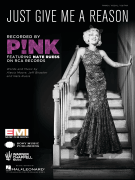Search Results for: “Reason”
Loading...
Just Give Me A Reason View 94 Products
10,000 Reasons (Bless The Lord) View 77 Products
(I Love You) For Sentimental Reasons View 58 Products
Million Reasons View 52 Products
Reason To Believe View 35 Products
You Are The Reason View 32 Products
Give Me One Reason View 31 Products
Reason For The Season View 21 Products
Rhymes And Reasons View 14 Products
The Reason View 11 Products
There's No Reason In The World View 8 Products
You're The Reason God Made Oklahoma View 7 Products
Sixteen Reasons (Why I Love You) View 7 Products
Never Been Any Reason View 5 Products
Reasons To Quit View 5 Products
Give Me The Reason View 4 Products
Without Rhyme Or Reason View 4 Products
Love Me For A Reason View 4 Products
Reasons View 3 Products
Rhyme & Reason View 3 Products
Rich Beyond Reason View 3 Products
Ain't No Reason View 3 Products
Reason View 2 Products
No Reason View 2 Products

















